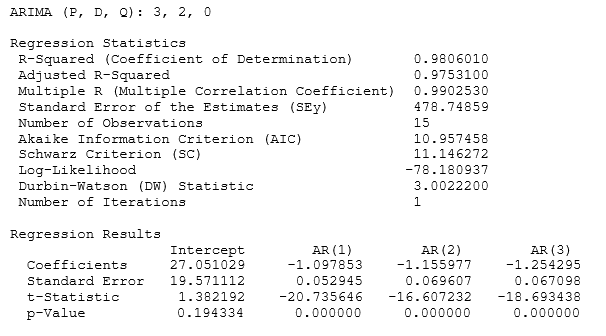- Related AI/ML Methods: Ensemble Complex Fit
- Related Traditional Methods: Detailed Autoeconometrics, ARIMA, Time-Series Forecasting
This algorithm computes and calibrates an ensemble of different time-series forecast models, selects the best combination, and generates forecasts for the single historical time-series variable. An ensemble of time-series forecast methods such as Holt–Winters, deseasonalized forecasts, ARIMA, and others are applied, the best model combinations are used, and the consensus forecasts are provided (Figure 9.69). A visual representation of the back-fitting and forecast fit is also provided in the results (Figure 9.70). An alternative is to run each of these models manually in BizStats. Enter the variables you need to classify and enter the number of clusters desired. For instance, the required model inputs look like the following:

Another related process is the Combinatorial Fuzzy Logic method available in BizStats. The term fuzzy logic is derived from fuzzy set theory to deal with reasoning that is approximate rather than accurate––as opposed to crisp logic, where binary sets have binary logic, fuzzy logic variables may have a truth value that ranges between 0 and 1 and is not constrained to the two truth values of classic propositional logic. This fuzzy weighting schema is used together with a combinatorial method to yield time-series forecast results.

Figure 9.69: AI/ML Ensemble Learning Time-Series Forecast

Figure 9.70: AI/ML Ensemble Learning Time-Series Forecast



